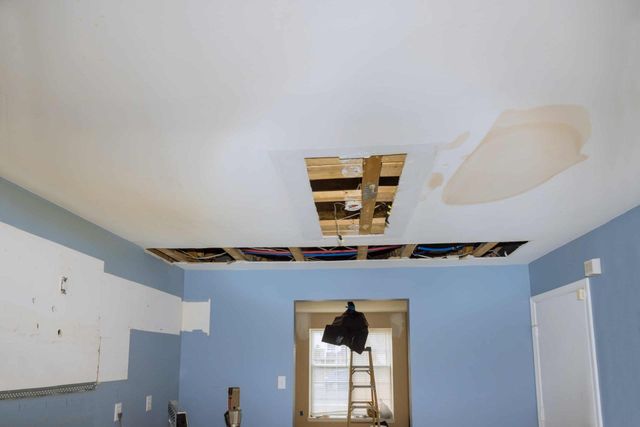The article in the next paragraphs pertaining to How to Repair and Prevent Bathroom Water Damage? is pretty much interesting. You should take a peek.

Water damage commonly happens in the restroom as a result of the water made use of daily. Often, the damage could be a little mold from the shower. Various other times, it's large damages on your floor. Whatever it is, it is constantly good to understand the reason and avoid it prior to it happens.
This guide will experience some of the typical root causes of water damage in the bathroom. We will likewise analyze what you can do to stop these causes from damaging your washroom. Let's dive in.
These are the typical factors you would certainly have water damage in your restrooms and also how you can find them:
Excess Dampness
It's cool to have that lengthy shower and sprinkle water while you hem and haw and also act like you're doing, yet sometimes these acts might create water damage to your washroom.
Spraying water around can create water to go to corners as well as create molds. View exactly how you spread out excess dampness around, and when you do it, clean it up to prevent damage.
Fractures in your wall surface tiles
Bathroom wall ceramic tiles have actually been particularly designed for that function. They secure the wall surface from dampness from individuals taking showers. However, they are not undestroyable.
Sometimes, your bathroom wall ceramic tiles fracture as well as permit some dampness to permeate right into the wall surface. This could potentially destroy the wall if you don't take any activity. If you observe a fracture on your wall surface ceramic tiles, fix it right away. Don't wait up until it ruins your wall.
Overflowing toilets and also sinks
As human beings, occasionally we make blunders that might trigger some water damage in the restroom. For instance, leaving your sink tap on could create overruning as well as damages to other parts of the restroom with moisture.
Likewise, a defective toilet could create overruning. For instance, a damaged toilet handle or various other parts of the tank. When this occurs, it could damage the flooring.
As quickly as you discover an overflowing sink or bathroom, call a plumbing to help manage it promptly.
Ruptured or Leaking Pipelines
There are several pipes carrying water to various parts of your shower room. Some pipes take water to the toilet, the sink, the faucets, the shower, as well as many various other locations. They crisscross the small location of the shower room.
Every so often, these pipelines could obtain rustic and ruptured. Other times, human activity might cause them to leakage. When this happens, you'll locate water in the corners of your bathroom or on the wall surface.
To find this, look out for gurgling walls, mold and mildews, or mildew. Call a specialist emergency situation plumbing technician to fix this when it occurs.
Roof Leakages
In some cases, the trouble of water damage to the shower room might not originate from the shower room. For example, a roof covering leak could create damages to the bathroom ceiling. You can detect the damage done by considering the water spots on the ceiling.
If you find water spots on your ceiling, check the roofing system to see if it's harmed. Then, call a specialist to help address the issue.
Verdict
Water damage to your restroom can be annoying. Nevertheless, you can manage it if you stop several of the causes stated in this guide. Call a specialist emergency plumbing technician if you notice any type of extreme damage.
How to Prevent Water Damage in Your Bathroom?
Water damage repair is an expensive, meticulous, and lengthy process. Unfortunately, bathrooms are the most susceptible rooms to water damage due to toilets, showers, and sinks. Pipes and fixtures wear out over time and are not immune to damage. But all is not lost, as there are ways to prevent water damage from occurring in your bathroom.
Check Your Plumbing
Nothing lasts forever, especially pipes, which can rust and begin leaking over time. You should periodically conduct pipe inspections and pay attention for any musty smells or water stains that may indicate you need water damage repair. Here are some things to check:
- Frequently test valves for your toilet, shower, and sink to ensure they are properly working.
- Check faucet supply lines hidden under vanities and replace when needed.
- Replace cracked or deteriorating caulking along sinks, tubs, and showers.
- If you notice a clog in your sink, call in a professional.
- Since you can’t check the pipes in the wall, keep an eye out for stains, drywall bubbling, musty smells, and excess moisture; if the bathroom is on a second level, check the ceiling of the room directly below for these signs.
Don’t Overwork Your Toilet
One of the most common reasons bathrooms need water damage repair is due to overflowing toilets. Save yourself the hassle of cleanup by being mindful and not pushing your toilet to extreme limits. If you have young children, it is especially important to keep an eye on them when they are in the bathroom and to teach them how to avoid clogging the toilet. Here are some more tips to help prevent your toilet from overflowing:
- If you have a septic tank, only use septic-safe toilet paper
- Do not flush anything down the toilet besides toilet paper; items like diapers and sanitary napkins will clog the piping
- Pay attention to your toilet’s water level: If it’s low, it could mean it is partially clogged or that there is a crack in the toilet bowl
https://www.alure.com/home-improvements-blog/resources/how-to-prevent-water-damage-in-your-bathroom

I found that review on How to Repair and Prevent Bathroom Water Damage? when perusing the internet. In case you appreciated our blog entry kindly don't forget to share it. Thanks a lot for going through it.
Schedule Your Service
Comments on “How to Stop Bathroom Water Damage”